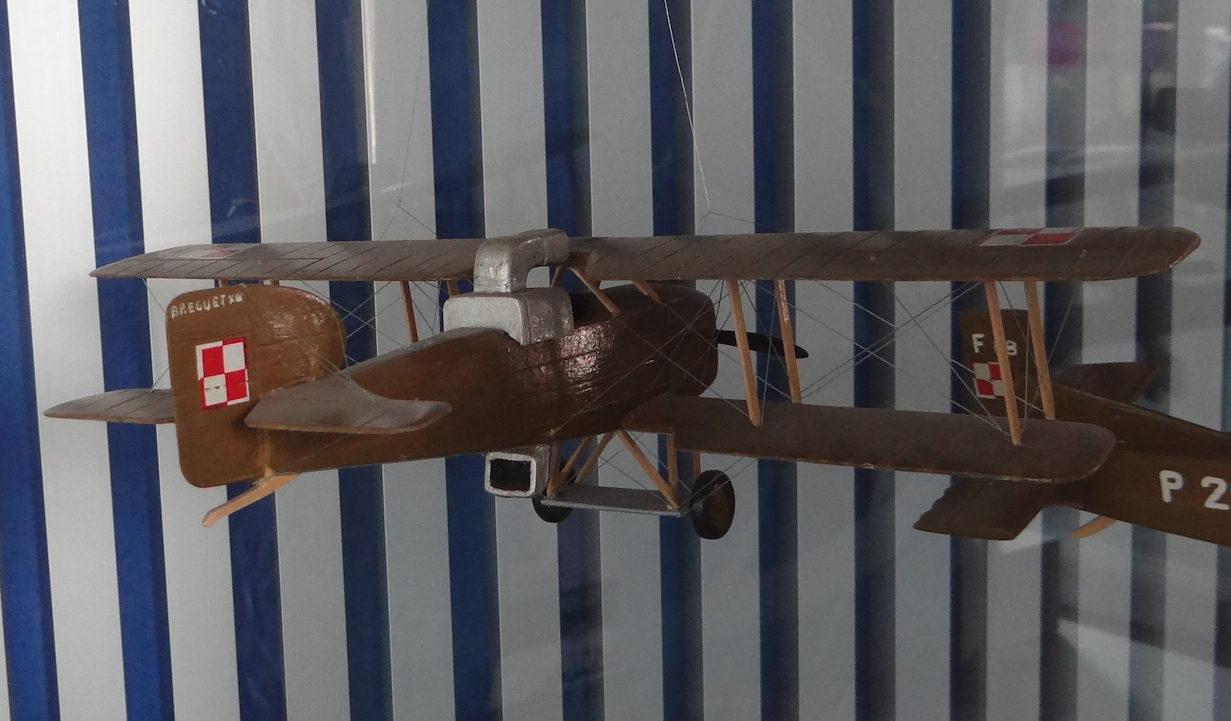Kraków 2020-12-31
Breguet 14.
The Breguet 14 biplane is a two-seat French combat aircraft used during the Great War and for many years after it.
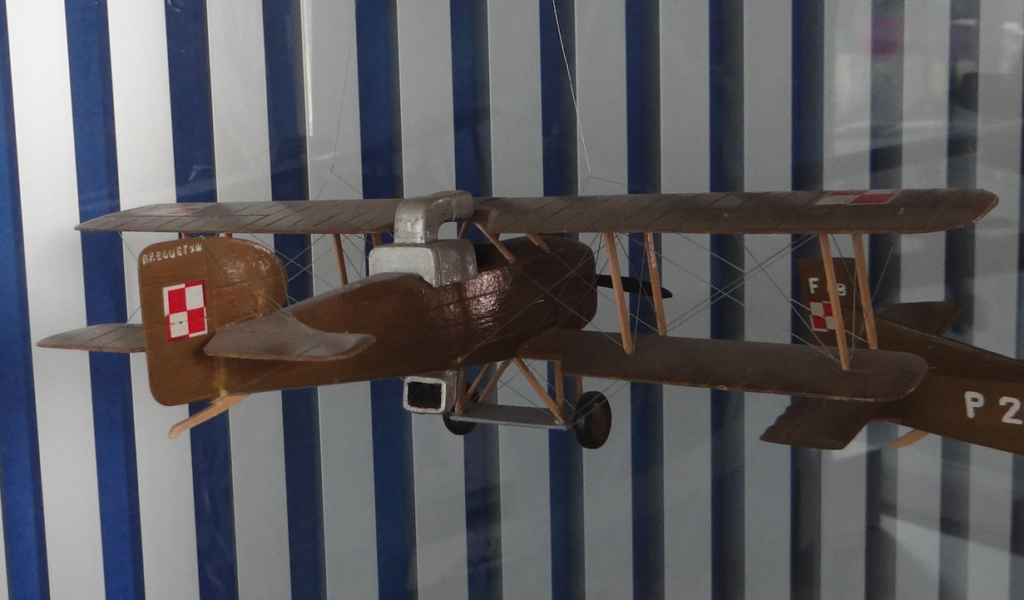
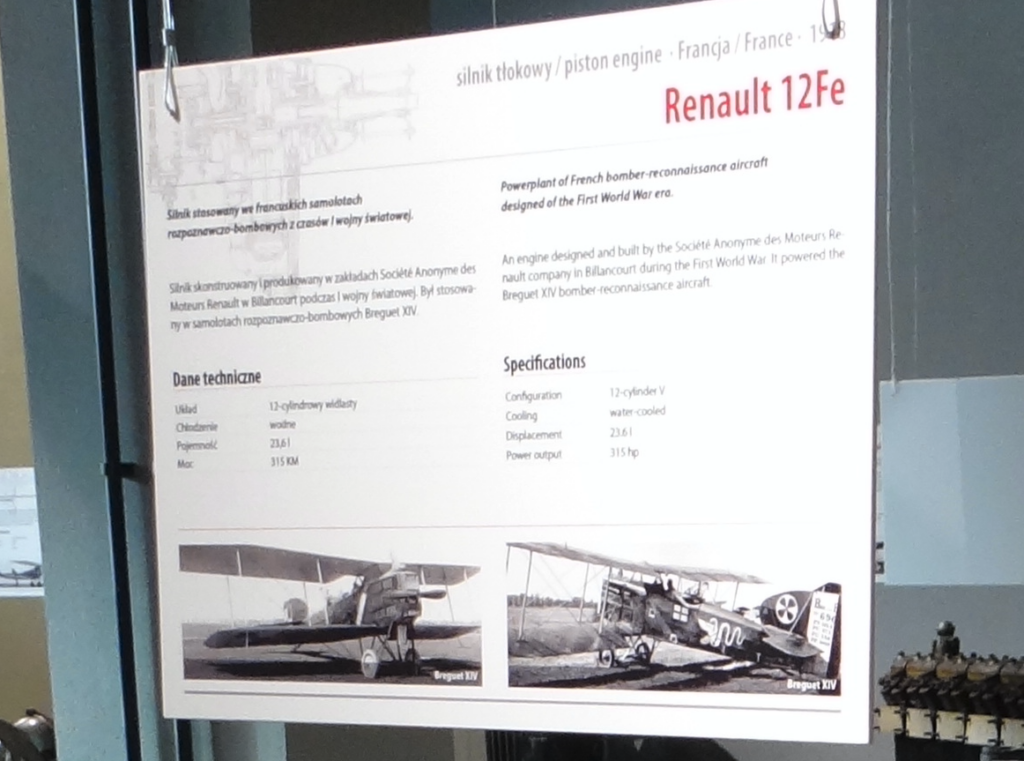
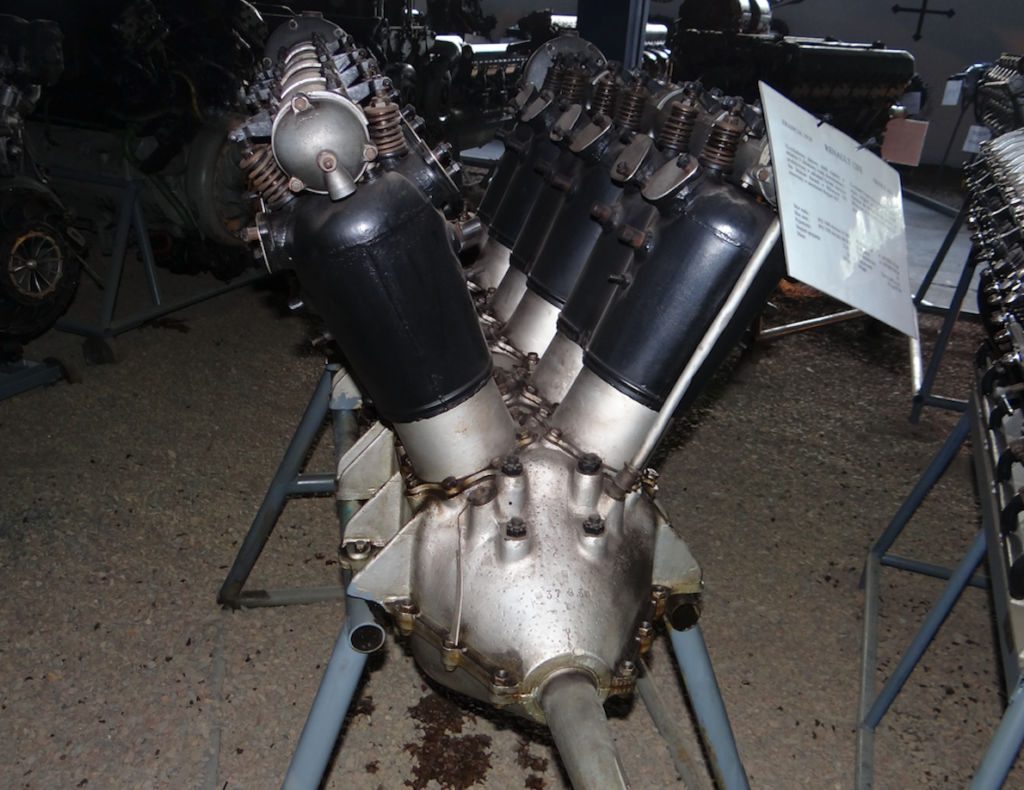
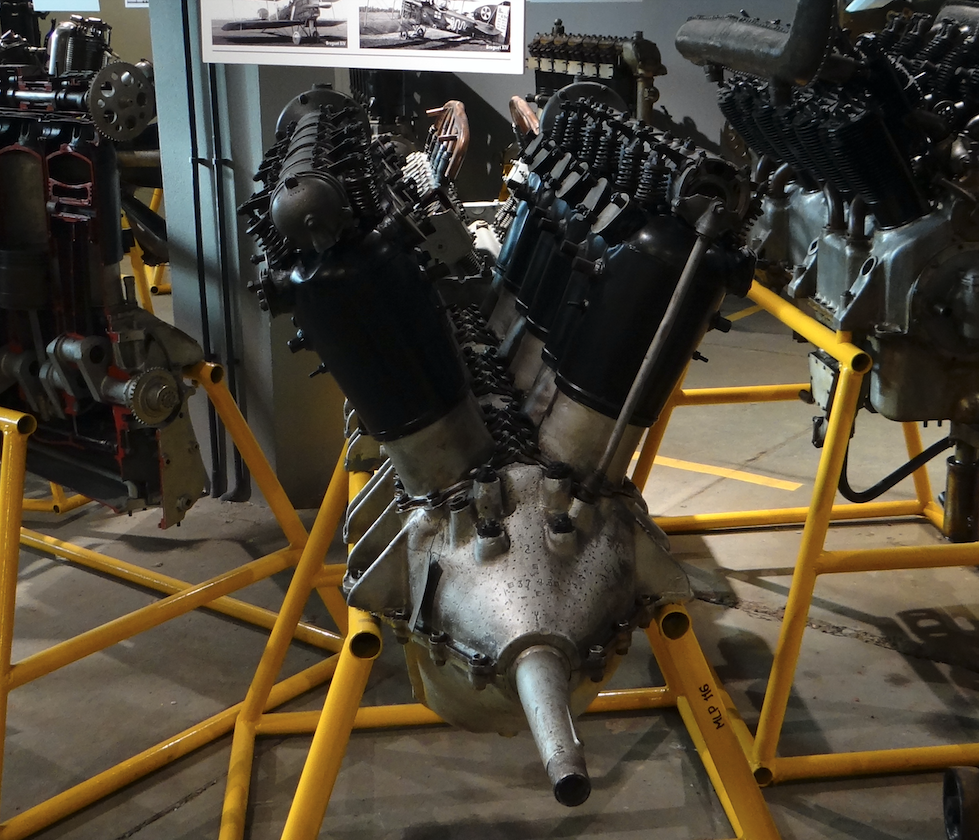
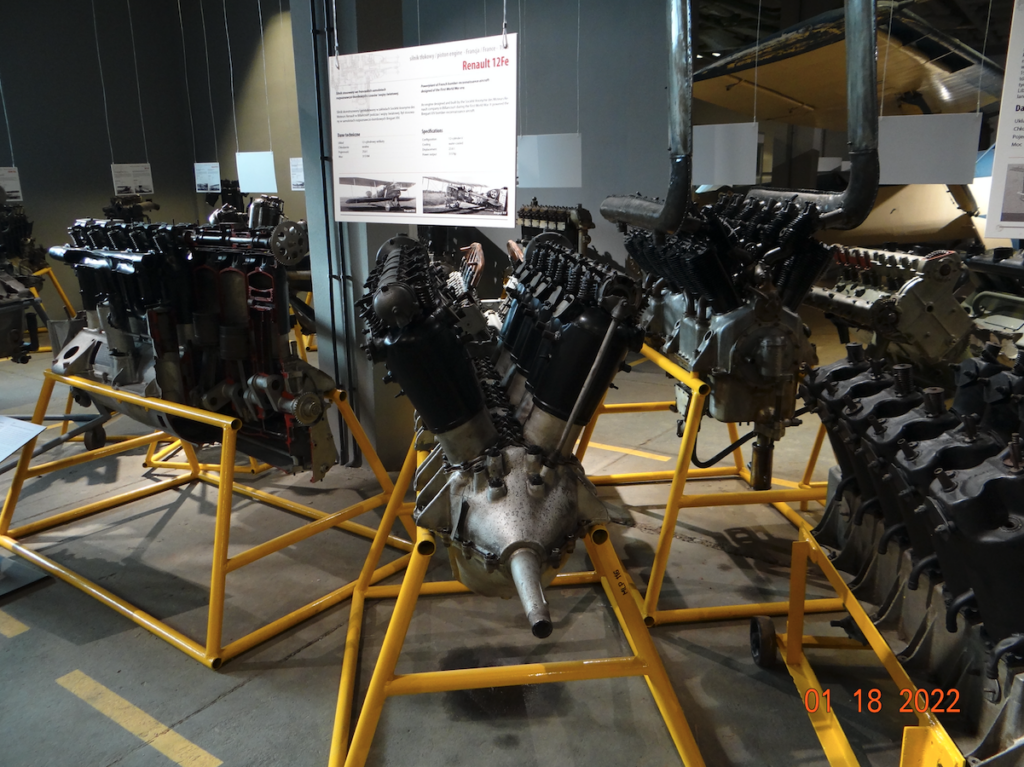
Description of the photo: French Renault 12 Fe engine, mass-produced since 1918. The engine is a 12-cylinder, in-line “V” engine, water-cooled, designed and manufactured at the Societe Anonyme des Moteurs Renault plant in Billancourt. It was used in Berguet 14 aircraft. The engine has a maximum power of 315 hp at 1,600 rpm. Nominal power of 300 hp at 1,500 rpm. Engine capacity is 23.6 liters. Compression ratio 3.0:1. Engine weight 357 kg.
Breguet 14 is a two-person French combat aircraft used during the Great World War and many years after it. The aircraft was built by the French company Societe Anonyme des Atelieurs d’Aviation Louis Breguet. The designer was Louis Breguet. The first flight took place on November 21, 1916. On April 12, 1917, the Breguet 14 aircraft successfully passed state tests and was put into series production. The French Ministry of Aviation ordered 150 units in the reconnaissance variant, designated Breguet 14 A2 and 100 units in the bomber variant Breguet 14 B2. Until 1918, the aircraft’s name was written in Roman numerals Breguet XIV.
The aircraft was produced between 1917 and 1928. The Breguet 14 aircraft was produced in two basic versions: the A2 reconnaissance and the B2 light bomber. Various aircraft engines were used as propulsion: Renault 12Fcx (300 hp, 224 kW) or Renault 12Fcy or Renault 12 Fe or Fiat A12 (240-285 hp) or Liberty 12 (400 hp).
The Breguet 14 A2 version was equipped with a camera, some of the planes had a radio station for cooperation with artillery. The Breguet 14 B2 version had Michelin bomb launchers on the lower wing. Breguet 14 planes in the reconnaissance and bomber versions entered the armament of the French Air Force in 1917. In the autumn of 1917, there were already 6 bomber squadrons, 3 reconnaissance (reconnaissance) and 3 cooperation with artillery on the front. Since the plane quickly showed very good combat and handling properties, including high performance and high resistance to damage, the French Air Force ordered further Breguet 14 planes. The planes were also built in other factories and exported to Belgium, Spain and the USA. By the end of the Great World War, about 5,500 Breguet 14 planes had been produced, and by 1928, 8,370 copies. The Breguet 14 was used by 28 countries around the world. Without a doubt, in 1917-1918, the Breguet 14 was the best French reconnaissance and bomber aircraft.
Breguet 14 in Poland.
In the spring of 1919, Breguet 14 aircraft arrived in Poland as part of General Józef Haller’s “Blue Army”. There were 45 Breguet 14 aircraft (in the A2 version; 20 aircraft, in the B2 version; 18 aircraft, in the E2 training version; 6 aircraft). According to other data, there were 39 Breguet 14 aircraft (in the A2 version; 20 aircraft, in the B2 version; 18 aircraft, in the GR long-range reconnaissance version; 1 aircraft). These were complete squadrons No. 3., 9., 59., 66. Additionally, the Breguet 14 aircraft were owned by the flight school, which was established in France. In 1920, there were further purchases of Breguet 14 aircraft, including a large batch of 30 aircraft. Several Breguet 14 aircraft in the sanitary version were also purchased. Breguet 14 aircraft took part in the Polish-Ukrainian War and then in the Polish-Bolshevik War. Over 70 Breguet 14 aircraft took part in the fighting. In total, the Polish Army used 158 Breguet 14 aircraft. The most were Breguet 14 A2 aircraft. Polish soldiers jokingly called Breguet 14 aircraft “Louis XIV”. In 1925, several Breguet 14 aircraft were converted into agricultural aircraft. These were the first aircraft of this type in Poland. The aircraft were used to dust forests against pests. In 1930, three Breguet 14 aircraft were converted into medical aircraft, for transporting the sick and wounded.
Construction.
The Breguet 14 is a two-seater, single-engine, biplane aircraft of mixed construction. The construction uses many steel tubes, which significantly increase durability.
The wings are biplane, straight, of wooden construction. The wing has a bird profile. The upper wing has a larger span than the lower wing. The wings are covered with fabric. There are collars between the wings, and everything is stiffened with wires. The ailerons are only on the upper wing. Initially, automatic gills were mounted on the lower wing, which were abandoned.
The fuselage of the aircraft is a wooden and steel truss, which is stiffened by wires. The covering is made of fabric. The front part of the fuselage is covered with duralumin sheet metal, which creates a kind of box that covers the entire engine. There are numerous ventilation holes in the side sheets. The engine coolant radiator is placed in the front of the fuselage and has a rectangular shape. From the front part of the fuselage, in the upper part, protrudes the exhaust manifold and a high chimney. There are two cabins in the fuselage of the aircraft and in both cabins there are controls. Both pilots can pilot the aircraft.
The aircraft’s tail is classic. Horizontal tail divided into rudders and stabilizers. The rudders have a large span and surface area. The vertical tail has a characteristic outline and is also divided into rudder and stabilizer.
The aircraft’s landing gear is classic, multi-leg, of a strong construction, with two wheels and shock absorption using rubber cords. The landing gear is complemented by a tail skid.
Engine.
Inline engine in a “V” configuration, liquid-cooled, with a radiator placed in the front of the fuselage. After passing through the radiator, the air flows around the engine and exits the fuselage through numerous holes. The basic engine was the Renault 12 Fcx or 12 Fcy or 12 Fe. It is a 12-cylinder engine in a “V” configuration, with a power of 300 or 310 hp. Other engines were also used, mainly the Fiat A12 or Liberty 12. Two-blade pulling propeller. Fuel is in two tanks of 130 liters, which were placed in the fuselage behind the engine.
Armature.
The Breguet 14 aircraft was very rich. The pilot in the first cabin had a machine gun at his disposal, which was synchronized with the propeller revolutions. It was a Vickers machine gun, caliber 7.7 mm, fed with ammunition from a belt, mounted on the left side of the fuselage. The pilot in the second cabin had at his disposal 1 or 2 machine guns placed on a turntable. These were usually Lewis machine guns of caliber 7.7 mm. The cartridges were in drum magazines. In the Breguet 14 B2 version, the bombs were suspended under the lower wing, on two Michelin launchers. The bomb load weighed up to 256-300 kg. The reconnaissance version of the Breguet 14 A2, carried only up to 32 kg of bombs, but more bombs could be carried in the observer’s cabin.
T-T Breguet 14 data:
Span 14.86 m. Length 8.87 m. Height 3.30 m. Wing area 49.20 m2. Empty weight 1,020 kg. Usable weight 526 kg. Total weight 1,546 kg. Maximum speed 170-190 km/h. Cruising speed 130-140 km/h. Ceiling 6,100 m. Range 400-460 km. Flight time 3 hours.
Listing.
The Polish Army used 158 Breguet 14 aircraft. The most numerous were Breguet 14 A2 aircraft. Polish soldiers jokingly called Breguet 14 aircraft “Louis XIV”.
Written by Karol Placha Hetman

